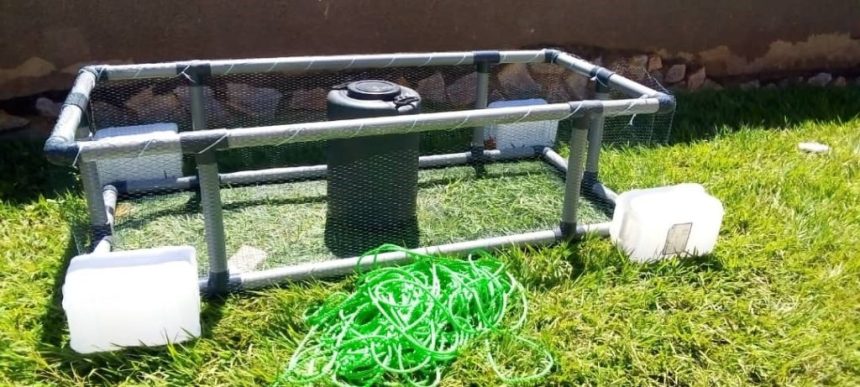Aquaculture is vital to Uganda, providing livelihoods for over 5 million people and essential protein for around 17 million citizens, with an average consumption of 10 kg per person. With Uganda’s population projected to double in the next 27 years, the National Development Plan III aims to significantly increase fish production, targeting 1 million metric tons (MT) from aquaculture by 2030. The Fisheries and Aquaculture Act 2022 emphasizes sustainable production, adhering to National Environmental Management principles.
As aquaculture expands, environmental challenges arise due to increased production intensity and waste, including uneaten feed, poor quality feeds, pseudofeces, escaped fish, and residual chemicals. These pollutants can deteriorate habitat quality, reduce biodiversity, eutrophicate waterways, and foster drug-resistant pathogens.
Mitigating Environmental Pollution
Researchers from Makerere University, in collaboration with the National Environment Management Authority (NEMA), conducted a project titled “Mitigating the Effects of Environmental Pollution from Aquaculture on Freshwater Resources in Lake Victoria Basin” (MEEP). Led by Dr. Ronald Semyalo from the Department of Zoology, Entomology, and Fisheries Sciences (ZEFS), the study assessed the impact of aquaculture facilities and practices on Lake Victoria and its catchment areas. The team explored innovative technologies like integrated wetland-bivalve systems to mitigate these impacts and reviewed national regulations on environmental and aquaculture practices.
The research surveyed fish farms in Buikwe, Jinja, and Mukono districts within the Victoria Water Management Zone. The team included Dr. Jerome Lugumira from NEMA, Dr. Robinson Odong, Mr. Drake Ssempijja from ZEFS, and Ms. Ritah Namisango, Senior Public Relations Officer at Makerere. The project was supported by the Government of Uganda through the Makerere University Research and Innovations Fund (MakRIF).
The project team engaged stakeholders, including fish farmers from Jinja, Buikwe, and Mukono, and experts from the Ministry of Water and Environment, NEMA, and the Directorate of Aquaculture Development. They found that only 138 out of 380 registered fish farms were active, with a significant percentage of inactive farms posing serious environmental threats.
Key Findings
- Environmental Impact Assessment (EIA): 81% of farmers had not conducted EIAs, leading to abandoned farms.
- Farm Characteristics: Most farms used earthen ponds (66.9%) and were semi-intensive (63.6%), relying on manufactured feed and pond fertilization.
- Fish Species: Nile tilapia was the top choice (96.1%) for monoculture farms.
- Demographics: Most respondents were male (90.7%), with a median age of 35 years.
- Fish Diseases: Various diseases affected aquaculture, including lesions and cysts on fish.
- Water Use: Farms primarily relied on spring and lake water, often shared with the community.
- Feed Management: Most farms used factory-made feeds, with some relying on farm-made feeds and pond fertilization.
- Waste Management: A lack of treatment for aquaculture effluent was noted, with most farms releasing waste directly into natural streams or wetlands.
- Water Quality: Measurements showed compliance with FAO optimal conditions for fish farms.
- Regulatory System: A gap analysis identified weaknesses in policies governing aquaculture, highlighting areas for improvement.
Innovative Solutions
The project developed an integrated wetlands-bivalve system to mitigate aquaculture pollution. This system uses wetland plants and bivalves to clean aquaculture effluent. Wetland plants like duckweeds absorb suspended solids and excess nutrients, while bivalves, as filter feeders, clean water of solid materials. This integration provides a synergistic solution for treating aquaculture effluent.
Dr. Jerome Lugumira from NEMA presented on policy gaps, emphasizing the need for EIAs and improved regulatory frameworks. He highlighted the inadequacies of existing policies, such as the National Environment Act, 2019, and the National Environment (Wetlands, Riverbanks and Lakeshores Management) Regulations, 2000. Dr. Lugumira called for comprehensive policy reviews and more robust regulations to guide sustainable aquaculture practices.
Stakeholder Recommendations
- Recruit technical staff to assist farmers.
- Provide thorough training for extension staff.
- Encourage value addition to farmed fish.
- Integrate climate-smart interventions in aquaculture.
- Popularize and periodically review policies regulating the sector.
- Involve multiple stakeholders in policy implementation.
- Invest in research responsive to the sector’s needs.
- Monitor feed quality and support private hatchery operators to ensure quality seed.
- Strengthen farm inspections and train farmers in proper management practices.
- Promote group farming to reduce costs, negotiate better prices, and access credit facilities.
The innovative integrated wetlands-bivalve system developed by Makerere University researchers offers a promising solution to mitigate pollution from aquaculture in the Lake Victoria Basin.




















